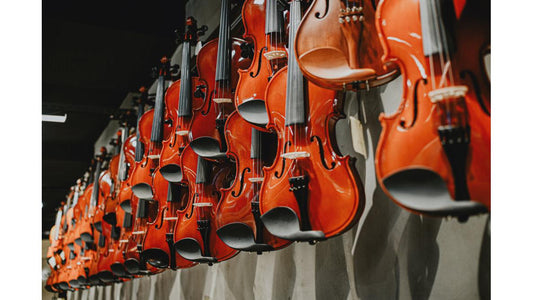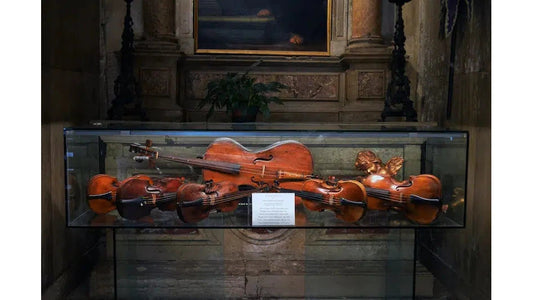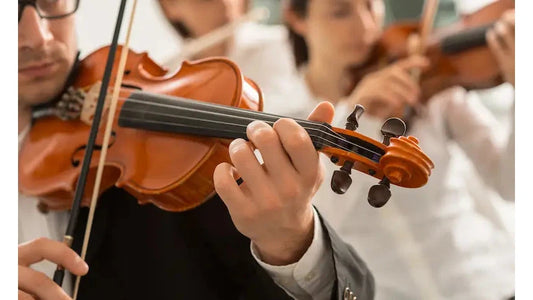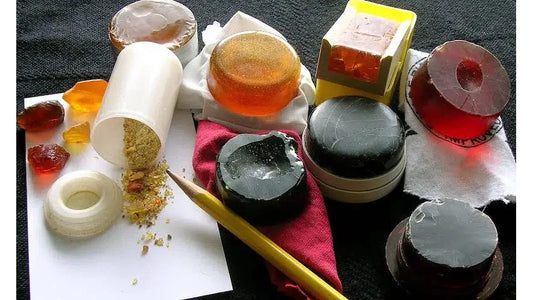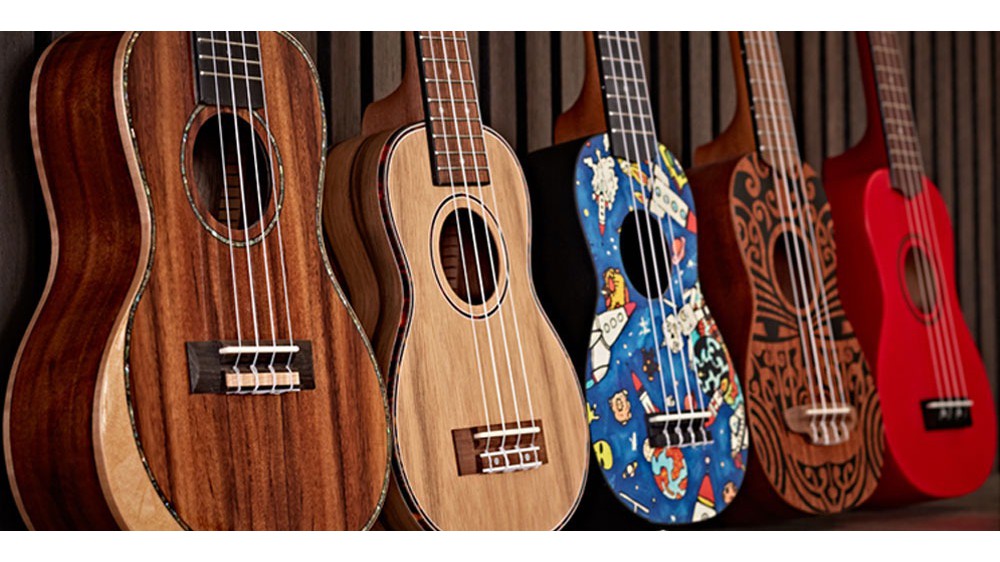
Sự Thật Bất Ngờ: Có Tới 11 Loại Đàn Ukulele Khác Nhau
Đàn Ukulele, một nhạc cụ đã trở nên phổ biến trong những năm gần đây, là một nhạc cụ giống như đàn guitar có dây nhỏ. Mặc dù được phổ biến nhờ xuất khẩu văn hóa của Hawaii, nhưng ban đầu nó được tạo ra bởi người Bồ Đào Nha và được những người nhập cư tìm việc làm mang đến những hòn đảo bình dị vào thế kỷ 19.
Ngày nay, hầu hết mọi người đều có ý tưởng tốt về hình dáng và âm thanh của đàn Ukulele. Nhưng bạn có biết có rất nhiều loại đàn Ukulele khác nhau không?
Hãy tiếp tục đọc nếu bạn muốn tìm hiểu mọi thứ cần biết về các loại đàn Ukulele khác nhau. Trong bài viết này, chúng ta sẽ đi sâu vào nguồn gốc và những phẩm chất độc đáo khiến mỗi cây đàn Ukulele trở nên đặc biệt.
Các loại đàn Ukulele tiêu chuẩn:
Bốn loại Ukulele phổ biến nhất là:
• Ukulele Soprano
• Ukulele Tenor
• Ukulele Concert
• Ukulele Baritone
Mỗi loại có một âm thanh và phẩm chất độc đáo khiến chúng phù hợp hơn với các loại nhạc sĩ khác nhau. Chúng ta hãy xem xét từng cái một cách chi tiết hơn.
Đàn Ukulele Soprano
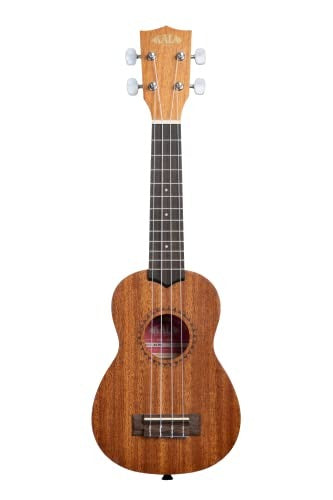
Soprano Ukulele là loại Uku nhỏ nhất và cũng là loại dễ nhận biết và phổ biến nhất.
Do đó, đây là nhạc cụ du lịch hoàn hảo vì nó vừa với hầu hết mọi loại túi và chỉ nặng nhất là vài lạng.
Đàn Ukulele Soprano có âm vực cao nhất so với bất kỳ loại đàn Ukulele nào khác do kích thước, hình dạng và số lượng dây của nó.
Mặc dù mối quan tâm chung là dây và phím đàn quá nhỏ đối với những người có bàn tay lớn hơn, nhưng nhạc cụ này thực sự hoàn toàn phù hợp với những người thuộc mọi kích cỡ bàn tay và ngón tay.
Đàn Ukulele Soprano tiêu chuẩn dài 21 inch, có 12-15 phím đàn và giai điệu theo GCEA.
Điều quan trọng cần lưu ý là so với các loại đàn Ukulele khác, Soprano có xu hướng lạc điệu nhanh hơn các loại khác.
Tuy nhiên, việc điều chỉnh cũng dễ quản lý hơn, vì vậy điều này không gây ra nhiều vấn đề cho hầu hết mọi người.
Đàn Ukulele Tenor
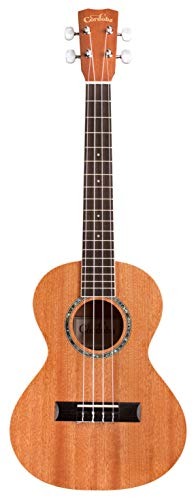
Đàn Ukulele Tenor là phiên bản lớn hơn của đàn Ukulele Soprano, mang đến cho bạn âm thanh to hơn, đầy đủ hơn với nhiều phạm vi và tùy chọn hơn so với phiên bản tiêu chuẩn.
Thêm vào đó, nhạc cụ này nặng hơn một chút, có nghĩa là bạn sẽ dễ dàng sử dụng hơn trên sân khấu hoặc dạo chơi trong thời gian rảnh rỗi.
Tuy nhiên, do kích thước của nó, nó không hoàn toàn di động như Soprano.
Do chiều dài và kích thước cần tăng lên, người chơi Ukulele Tenor cũng có thể chơi các nốt cao hơn trên phím đàn.
Điều này mở ra một khía cạnh hoàn chỉnh của các bài hát Ukulele hoàn toàn không có sẵn đối với các loại Uku Soprano điển hình, khiến đây là lựa chọn hoàn hảo cho những người chơi hòa nhạc hoặc nếu bạn đang bắt đầu thực hiện sở thích Uku của mình một cách bán chuyên.
Ukulele Tenor tiêu chuẩn dài khoảng 26 inch, có 15-19 (hoặc nhiều hơn) phím đàn và thường điều chỉnh theo GCEA.
Tuy nhiên, đôi khi bạn có thể muốn điều chỉnh nó thấp hơn xuống DGBE, điều này cũng hoàn toàn có thể xảy ra.
Đàn Ukulele Concert
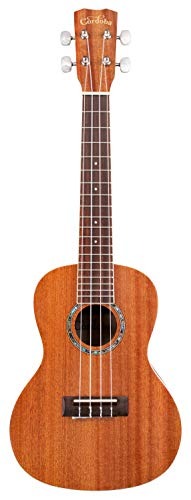
Ở giữa Ukulele Tenor và Soprano, Concert Ukulele có kích cỡ lớn hơn một chút so với hầu hết các loại Ukulele mà bạn có thể thấy ngoài tự nhiên.
Mặc dù điều đó làm cho nó ít di động hơn, nhưng bạn sẽ thấy rằng một cây đàn Ukulele Concert có âm thanh tròn trịa phát ra tốt ngay cả trong môi trường đông đúc.
Đàn Ukulele Concert có cần thường dài hơn một hoặc hai inch so với đàn Ukulele Soprano trung bình.
Tuy nhiên, vì nó thường có ít phím đàn hơn so với Tenor, nên bạn sẽ không thể đánh được các nốt cao như bạn có thể làm với Tenor.
Một điều khác về đàn Ukulele Concert mà mọi người yêu thích là khoảng cách giữa các phím đàn.
Nó có nhiều khoảng trống hơn một chút ở giữa mỗi phím đàn, làm cho nó trở thành một lựa chọn tuyệt vời cho những người có bàn tay và ngón tay lớn hơn.
Nếu bạn đang tìm kiếm một cây đàn Ukulele kiểu truyền thống mang đến cho bạn nhiều lựa chọn hơn so với soprano, thì bạn có thể chọn Ukulele Concert.
Đàn Ukulele Baritone
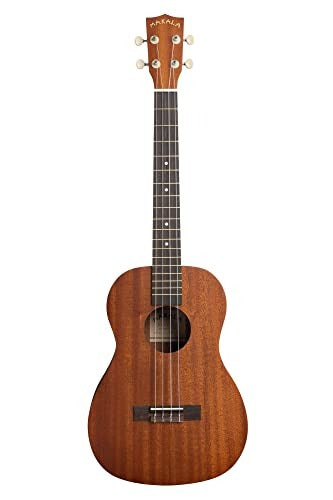
Có khả năng đạt được âm sắc sâu hơn so với các loại còn lại, Baritone Ukulele là loại lớn nhất trong họ Ukulele và thường được sử dụng để đi cùng với các ban nhạc đầy đủ hoặc nổi bật trong một buổi giao lưu.
Mặc dù những nốt thấp này rất thú vị và hữu ích, nhưng bạn sẽ mất đi một phần đáng kể các âm cao hơn mà các loại đàn Ukulele Soprano, Concert và Tenor có thể tạo ra.
Trong khi ai đó đã phát minh ra đàn Ukulele Baritone vào những năm 1940, thì vẫn chưa rõ ai là người thực sự tạo ra loại nhạc cụ tuyệt vời này.
Trong một câu chuyện cổ xưa, hai người đàn ông, Arthur Godfrey và Herk Favilla , cả hai đều tuyên bố mình là người phát minh ra Uku Baritone.
Godfrey là một nhân vật truyền hình; Favilla là một nghệ nhân làm đàn thế hệ thứ ba và là chủ cửa hàng nhạc cụ có dây.
Nếu bạn là một nghệ sĩ guitar, bạn có thể thích đàn Ukulele Baritone như một nhạc cụ du lịch vì nó nhỏ hơn nhiều so với đàn guitar trung bình và nó có âm sắc giống hơn các loại đàn Ukulele tiêu chuẩn khác.
Nó có cần dài 30 inch trở lên, phím đàn 19-21 và điều chỉnh xuống DGBE.
Các Loại Ukulele Đặc Biệt
Các loại đàn Ukulele sau đây là các biến thể của đàn Ukulele Soprano, Concert, Tenor và Baritone tiêu chuẩn mà bạn sẽ thấy ở mọi cửa hàng âm nhạc.
Mặc dù nhiều cửa hàng cũng có các loại này, nhưng chúng ít phổ biến hơn và bạn có thể phải mất nhiều công sức hơn một chút để tìm được loại ưng ý.
Ukulele dứa

Đàn Ukulele Dứa được coi là một món đồ mới lạ đối với một số người, nhưng nhiều nhạc sĩ thực sự thích nó hơn so với đàn Ukulele Soprano hoặc Concert tiêu chuẩn. Nó có hình dạng cơ thể độc đáo trông giống hệt như một quả dứa được cắt làm đôi và khoét rỗng.
Mặc dù điều này có vẻ giống như một chi tiết vô thưởng vô phạt, nhưng nó giúp tạo ra âm thanh sôi động hơn so với các hình dạng cơ thể truyền thống.
Kết quả là, Uku hình quả dứa là hình dạng ưa thích của nhiều người chơi Soprano và người chơi Concert, đặc biệt là cho hát rong hoặc một số hình thức biểu diễn.
Mọi người yêu thích hình dáng và âm thanh vượt qua tiếng ồn tốt hơn so với các mẫu tiêu chuẩn.
Samuel Kaialiilii Kamaka đã phát minh ra cây đàn Ukulele hình quả dứa đầu tiên. Ông là người sáng lập thương hiệu đàn Ukulele Kamaka huyền thoại.
Rõ ràng, nó khiến họ nhớ đến những quả dứa mà tác giả và bạn bè đã ăn xung quanh quần đảo Hawaii.
Đàn Ukulele dáng khuyết (cutaway)
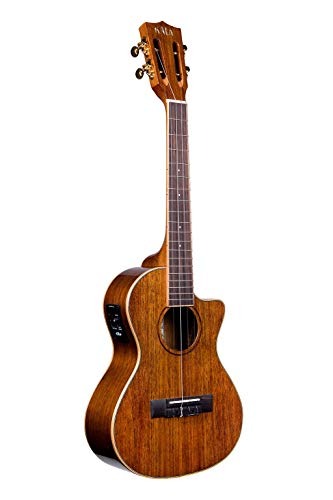
Ukulele Cutaway là một loại đàn phổ biến ở nhiều cửa hàng âm nhạc và là loại đàn Ukulele đặc biệt phổ biến đối với người chơi thuộc cả bốn loại chính.
Về cơ bản, đàn Ukulele cutaway có vai phải bị khuyết. Bạn có thể chơi các phím trên cùng dễ dàng hơn nhờ phần khuyết đó.
Bạn có thể tìm thấy các biến thể cutaway của đàn Ukulele Soprano, Tenor, Concert và Baritone, vì vậy cách khuyết ảnh hưởng đến âm thanh sẽ phụ thuộc vào nội dung bạn đang chơi.
Mặc dù nó có ảnh hưởng nhỏ đến độ tròn và độ sâu của âm thanh, nhưng các đường khuyết chủ yếu giúp chơi các mẫu phức tạp trên một nhạc cụ nhỏ như vậy dễ dàng hơn.
Guitalele
Guitalele là một trong những loại đàn Ukulele “lai” phổ biến nhất, nơi những người sáng tạo kết hợp các phẩm chất từ một nhạc cụ có dây khác vào dạng đàn Ukulele nhỏ gọn.
Guitalele là sự kết hợp giữa guitar cổ điển và Ukulele Tenor.
Mặc dù bạn có thể chơi nhiều hợp âm với một cây đàn Uku tiêu chuẩn, nhưng đàn Guitalele có 6 dây, cho bạn khả năng chơi nhiều loại hợp âm hơn.
Một Uku Tenor tiêu chuẩn đã có cần dài hơn, do đó, việc thêm nhiều dây hơn sẽ cho phép bạn tiếp cận với nhiều loại nhạc hơn.
Tuy nhiên, cách điều chỉnh của Guitalele khác với Uku Tenor tiêu chuẩn và guitar cổ điển. Nó điều chỉnh theo ADGCEA, nâng cao độ của nhạc cụ từ guitar nhưng hạ thấp âm vực từ đàn Ukulele.
Banjolele
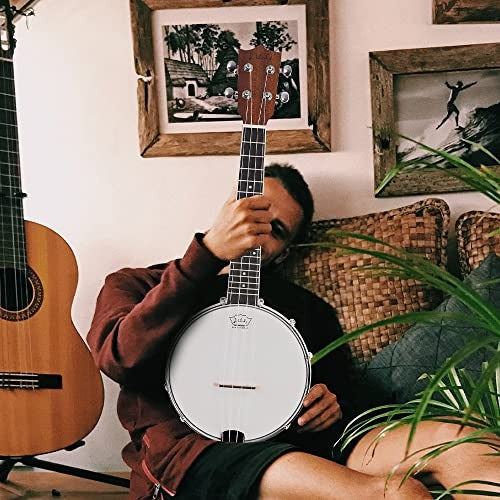
Như bạn có thể đoán, Banjolele là sự giao thoa thú vị giữa đàn Ukulele và banjo, một nhạc cụ năm dây phổ biến trong nhạc đồng quê, bluegrass và nhạc dân gian.
Vòng kim loại xung quanh thân đàn tròn tạo ra một âm thanh độc đáo khiến người chơi nổi bật so với những người đam mê Ukulele.
Giống như một chiếc Banjo kích thước đầy đủ, Banjolele thường có dây nylon nhưng giai điệu cao hơn so với GCEA. Do đó, những người chơi Ukulele Soprano có thể cảm thấy thoải mái nhất với Banjolele.
Tuy nhiên, những người chơi Concert hoặc Tenor có thể thấy nó là một phần bổ sung thú vị cho tiết mục của họ.
Nó có 15 phím đàn, dài hơn so với Soprano nhưng là tiêu chuẩn cho Concert.
Banjolele đạt được mức độ phổ biến cao nhất vào những năm 1920 và 1930 với các nghệ sĩ Hoa Kỳ như Roy Smeck và Wendell Hall.
Kể từ đó, việc sử dụng nó giảm dần và hiếm khi thấy nó được chơi ở bất cứ đâu chứ đừng nói đến việc treo trong các cửa hàng âm nhạc.
Tuy nhiên, ngày nay, nó đang trở nên phổ biến như một nhạc cụ đặc biệt với âm thanh sảng khoái mà bạn có thể sử dụng trong nhiều thể loại nhạc.
Ukulele Bass
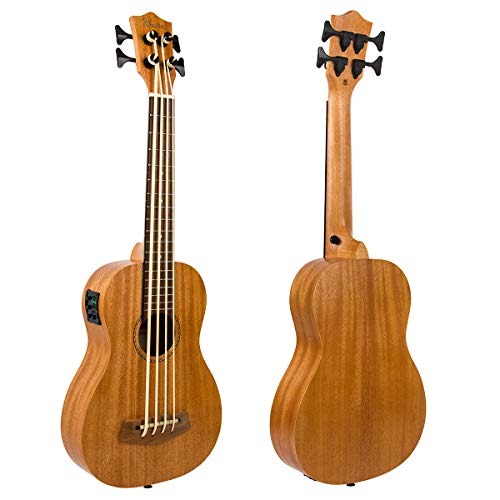
Bass Ukulele là một nhạc cụ nhỏ thú vị ngày càng phổ biến như một người bạn đồng hành cho những người chơi bass đang tìm cách giải quyết cơn ngứa âm nhạc đó.
Mặc dù có cùng kích thước với đàn Ukulele Baritone, nhưng đàn Ukulele Bass có dây polyurethane có thể bắt chước các nốt của Upright Bass.
Ban đầu được phát triển bởi Road Toad vào năm 2007, người đã hợp tác với Kala vào năm 2009, đàn Ukulele Bass hoặc U-Bass ban đầu bị loại bỏ như một mánh lới quảng cáo để thu hút những người chơi Bass mới đến với hiện trường.
Tuy nhiên, một khi những người chơi dày dạn kinh nghiệm đã chạm tay vào nhạc cụ, họ nhanh chóng nhận ra rằng U-Bass không có gì đáng để đùa.
Vì đàn Ukulele Bass còn mới so với các loại còn lại, nên nó chỉ mới được công nhận gần đây.
Ngày nay, bạn sẽ khó tìm được một cửa hàng hoặc nhà bán lẻ trực tuyến nào không trưng bày một số loại U-Bass di động.
Harp Ukulele
Là sự kết hợp đẹp như mơ giữa đàn hạc và đàn Ukulele, đàn Harp Ukulele có cần đàn dài với các dây có phím đàn giống như đàn Ukulele Tenor hoặc đàn Ukulele Concert.
Tuy nhiên, nó cũng có phần mở rộng ngựa đàn giống như đàn hạc, với bốn hoặc năm dây không có phím đàn mà bạn có thể chơi thẳng đứng hoặc đặt ngang đùi như một cây đàn Uku tiêu chuẩn.
Nguồn gốc chính xác của đàn Harp Ukulele không rõ ràng nhất, nhưng lịch sử ghi công Kris Knutsen với việc mang chiếc đàn đầu tiên đến Hoa Kỳ vào năm 1896.
Mặc dù nó chưa bao giờ đạt được mức độ phổ biến gần như bằng các biến thể khác như Banjolele và Guitalele, nhưng các nhạc sĩ hiện đang thử nghiệm chúng thường xuyên hơn.
Không còn nghi ngờ gì nữa, chúng là một trong những nhạc cụ độc đáo hơn cả.
Khó khăn với đàn Harp Ukulele là khó sản xuất nhạc cụ chất lượng hàng đầu.
Tuy nhiên, với những cải tiến trong công nghệ, đàn Harp Ukulele có thể sẽ tăng đột biến trong việc sử dụng trong những năm tới.
Đàn Ukulele điện
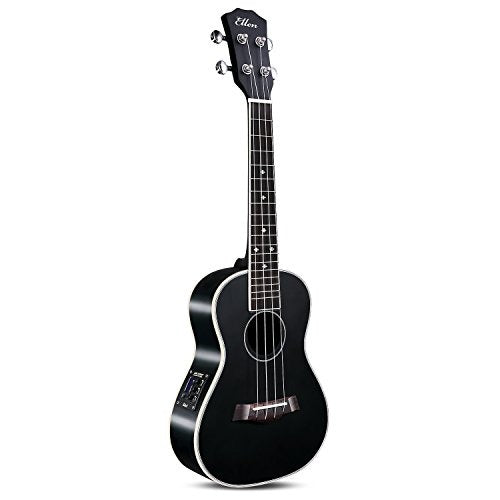
Cuối cùng nhưng không kém phần quan trọng, Electric Ukulele chỉ là phiên bản điện khí hóa của Ukulele tiêu chuẩn.
Bạn có thể tìm thấy các loại đàn Ukulele Soprano, Tenor, Concert và Baritone điện. Bạn thậm chí có thể tìm thấy một số loại Uku điện đặc biệt, chẳng hạn như đàn guitalele điện hoặc đàn Ukulele Bass điện.
Chúng đặc biệt hữu ích nếu bạn muốn ghi âm một số bản nhạc có sử dụng đàn Ukulele, cắm thẳng vào hệ thống của bạn.
Có hai loại đàn Ukulele điện khác nhau; điện hoàn toàn (full-electric) và điện âm (electro-acoustic).
Mặc dù chạy hoàn toàn bằng điện có thể có thêm một số tùy chọn về giao diện điện tử, nhưng cho đến nay, điện âm phổ biến hơn.
Chúng thường rẻ hơn và bạn có thể chơi chúng mà không cần bất kỳ thiết bị âm thanh nào.
Edmund A. Rafalco đã cấp bằng sáng chế cho chiếc Uku điện đầu tiên vào năm 2012, đây là chiếc đàn Ukulele xuất hiện gần đây nhất.
Tuy nhiên, vì ngày nay hầu hết âm nhạc được tạo ra bằng điện tử, nên nó trở nên sẵn có ở hầu hết những nơi bạn có thể mua nhạc cụ.
Phần kết luận
Chúng tôi đã trình bày tất cả các loại đàn Ukulele khác nhau.
Từ Soprano tiêu chuẩn đến đàn Harp Ukulele, chúng tôi hy vọng bạn đã hiểu rõ hơn về nhiều lựa chọn có sẵn.
Bạn càng tìm hiểu nhiều về các loại đàn Ukulele khác nhau, bạn càng có thể trở nên sáng tạo và có cảm hứng hơn để tạo ra âm nhạc mới.
Uku nào cũng có công dụng của nó.
Nếu bạn đang tìm kiếm một nhạc cụ đáng tin cậy mà bạn có thể mang theo khi đi du lịch, thì không có lựa chọn nào tốt hơn một cây đàn Ukulele độc đáo có âm thanh tuyệt vời cho dù bạn ở đâu.

